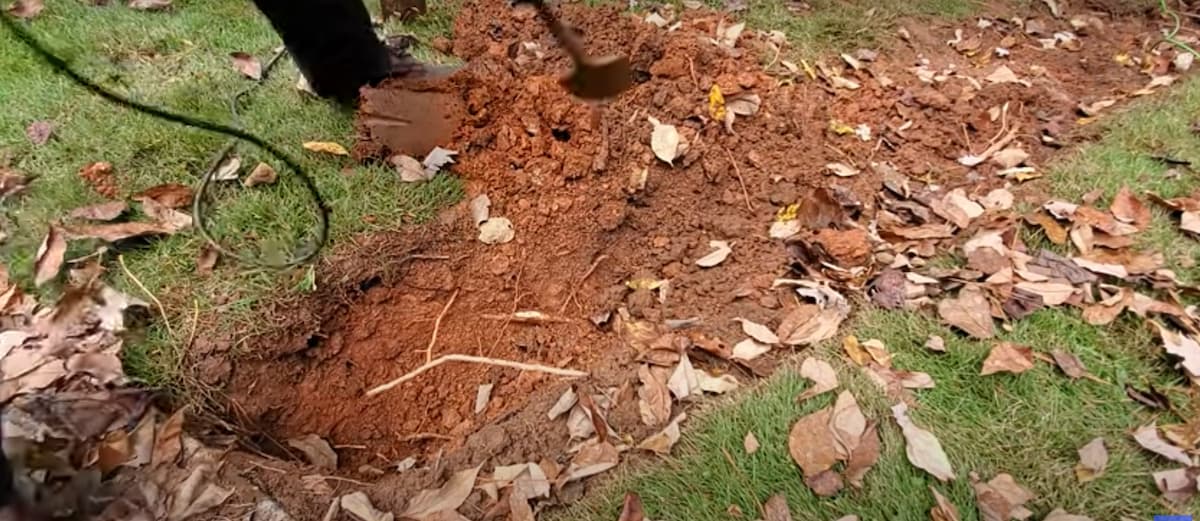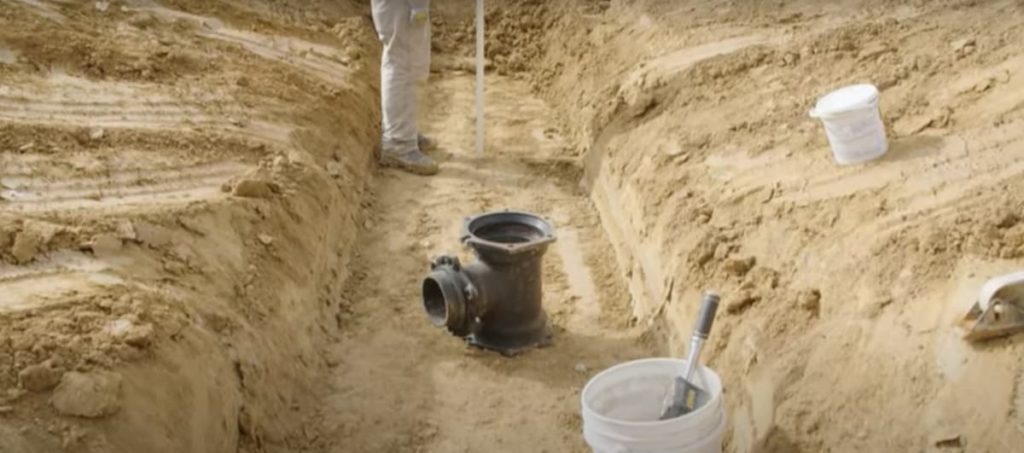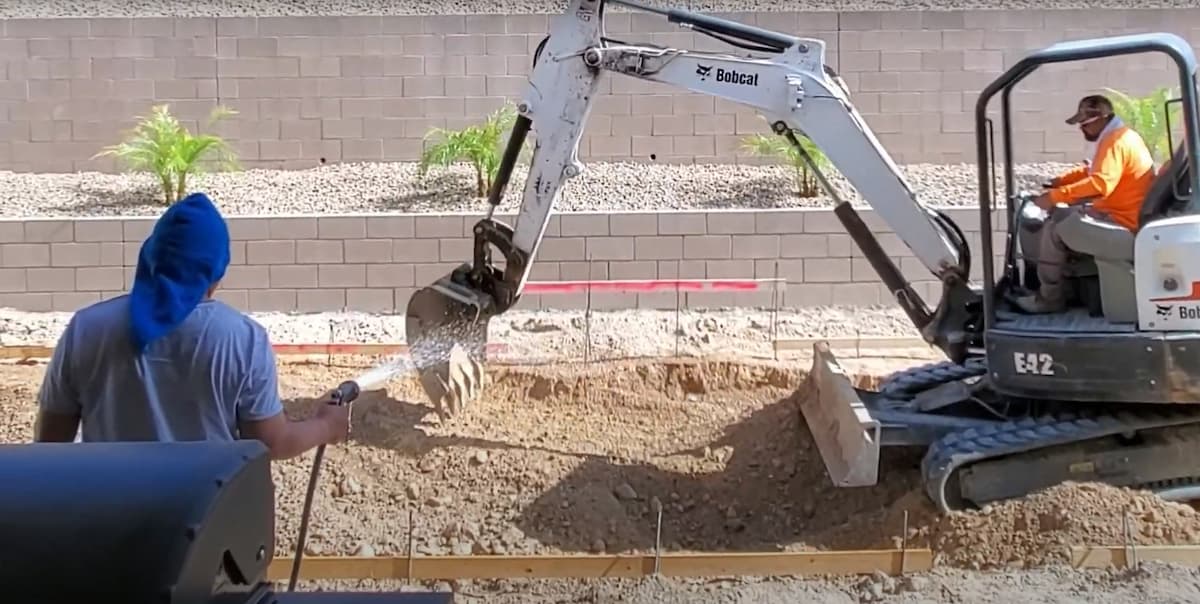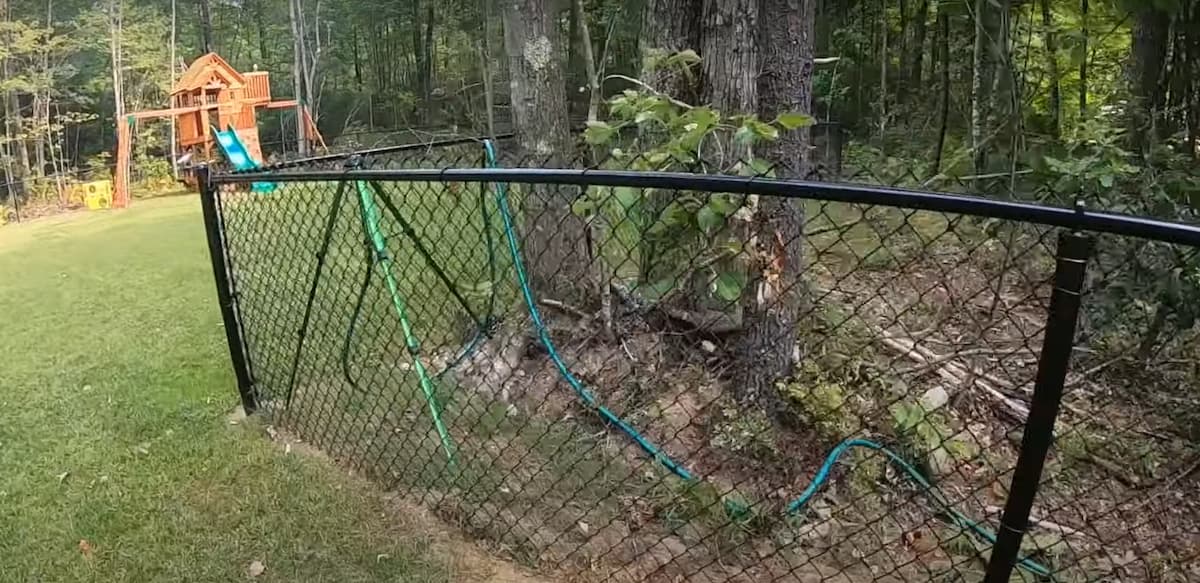
Trenching is a manual excavation technique with a trenching machine. It’s typically done in urban areas where machines are prohibited from going or can’t easily go, such as narrow spaces between buildings or underneath sidewalks. Trenches are usually deeper than most people realise, most often, they’re between three and four metres deep at least, but it depends on the soil type and what engineers have determined to be safe for directly supporting the foundations of buildings.
The health and safety of workers is always a priority, so often trenches are limited to 300mm deep work. The excavation may typically have sloping sides because the trenching machine is only as wide as its bucket, and this makes it easier for workers to see what they’re doing. Shoring is installed to prevent soil or other materials like a rock from caving in. It’s usually made of steel, but aluminium is sometimes used to save weight and offer additional health and safety for the workers that work in the entire trench.
What is Trenching?
Trenching, or “trench digging” is usually done in cases where the cost of other options are prohibitively expensive. There are many examples of this, but one example where it’s used several times is when building a new foundation for an auto repair shop on the outer edge of an existing parking lot that’s already serviced by power and water utilities. The location makes it impossible to extend these services to the new shop while keeping them functional for the rest of the property, so trenching is used instead.
The excavation process starts with workers marking out areas to be excavated using spray paint markings on asphalt or concrete. The level of safety is determined by the depth and shoring of the trenching, including other hazards around the trench. Once the line has been marked out, power utility companies may be contacted to confirm where their cables and pipes are located. If they own or service the property, this isn’t necessary, but sometimes new trenches pass close enough to an existing cable or pipeline that contact is still made. This trenching process is crucial for the workers’ safety.
Once it’s been confirmed where everything is (or isn’t), the trench excavation begins with a backhoe mounted on a bulldozer, front end loader or similar vehicle. The size of equipment required for this type of work varies depending on the depth and length of the trench, but at least one piece of trench equipment on the smaller end of this scale is used.
Once the equipment has done its job, it’s time for trench backfilling. The excavated soil is placed along one edge of the trench excavation and compacted using a compactor on tracks or hydraulically by being bounced up and down on site. Once that’s complete, any kerbstones are replaced where necessary, followed by new asphalt or concrete being poured into the new trench line.
Benefits of Trenching
There are several benefits to trenching:
1. Only small amounts of trench soil needs to be excavated, requiring minimal space at the worksite making it suitable for use in narrow spaces between buildings or under roads where other large construction equipment would pose an issue if they needed to go there at all, but also poses some challenges for the excavator.
2. Trench digging and excavations are very fast compared to most other construction methods, so they can be used when there are time constraints.
3. Few people are hurt by the actual trench excavation process because the only thing that needs to go into the trench is equipment and material required for backfilling which can all easily fit on-site or be delivered with a small enough vehicle that doesn’t pose an issue in traffic, if necessary while working in smaller spaces where larger vehicles couldn’t go.
4. There aren’t many health risks involved with this type of work aside from typical hazards found on any job site involving moving heavy equipment, vibrating tools or long hours standing on your feet doing the heavy lifting, walking or climbing.
5. Trenching is fast and efficient for this type of work making it cheaper than other methods, but these types of projects aren’t typically done in the city unless there’s a good reason to do them any differently, which brings us to some challenges trenching presents.
Disadvantages of Trenching
1. Trench excavation is an extremely invasive development option with the least amount of flexibility because all utilities may be located before excavation begins. Excavators can’t go back later and add or move infrastructure that wasn’t previously known during planning stages because it would require a significantly more complex process that would take considerably longer time to complete. This means if a new building is going where utility services didn’t exist before, they’ll need to be installed first while some existing utilities might also need to be relocated depending on where the new building is going and how much space is required for excavation without compromising other local infrastructure.
2. Pavement and footpaths need to be repaired in a timely fashion at considerable expense because trenches aren’t easily accessible for regular asphalt or concrete repairs. This means they can take up emergency repair crews’ time that could be spent elsewhere, but this problem isn’t encountered when digging into the road itself because it’s already dug up if construction requires it to begin with.
3. Trenches don’t look very nice leaving unsightly scars in streets and driveways which might not be aesthetically pleasing enough to maintain by standard methods such as asphalt or concrete replacement instead of trenching over the top of the wires.
4. Trenching can damage underground utility services if it’s not done properly with everything that needs to be known about utilities in the area before any work begins, but this is possible with most other excavation methods as well when proper precautions aren’t taken beforehand. The main difference here is this type of work requires either a lot more time and effort or exponentially larger costs for pre-emptive mitigation compared with typical groundwork, which would require different equipment anyway because trenches are too narrow for some types of heavy machinery used on these sites.
5. Trenches don’t leave much room left over for manoeuvring large pieces of construction equipment around without making things rather tight ensuring there’s no room to make last-minute changes if conditions change unexpectedly.
6. It’s not possible to easily seal up the sides of a trench once it’s dug, so keeping unwanted visitors out or protecting anything stored in them is more difficult than with other types of excavation because trenches can’t be cordoned off like most buildings sites are either by accident if someone walks into one or on purpose for security reasons. Despite these challenges, a trench produces a quick and relatively cheap result that doesn’t require much modification after the fact, which makes this excavation method particularly useful for small DIY construction projects where budgets are tight and time constraints are strict. The only difference here is you’ll need to do most of your own digging or hire others to help with it because renting equipment alone may cost an arm and a legend hiring skilled labourers can get expensive unless you do it yourself, but these shortcomings tend to justify the costs if you know what you’re doing and don’t require expert or professional help for this type of job.
Trench Construction
There are 4 different methods used to build trenches for utility services throughout most parts of the world, but each has its own set of advantages and disadvantages that might be important depending on where you live or what type of work you’re doing. They are as follows:
Open-cut Trenching
1. Open-cut is probably the most popular method because it’s readily accessible through relatively shallow digging practices making it easier to use with less training than other types of excavation available. The only problem here is these trenches tend to look very ugly and often damage private property like roads and driveways if they aren’t done correctly without taking necessary precautions beforehand, which means any unexpected repairs can take even longer and cost even more money that could have been saved by avoiding all these problems in the first place.
Pipe-bursting
2. Pipe-bursting is when existing underground utility services are pulled apart using air pressure in order to make way for new ones, but this can cause damage along the path of excavation by fracturing pavement if done improperly leaving long-term problems with streets and driveways that need to be fixed sometime after construction is completed. Even if everything goes right, people often complain about the excessive noise pipes make doing this type of work because it sounds like a plane taking off throughout most parts of the process making pipe bursting an unpopular choice among homeowners living nearby. Beyond these disadvantages, there’s also no control over how much ground gets dug up or where trenchless methods leave vacant space behind without any landscaping improvements unless you do it yourself.
Sliplining
3. Sliplining involves forcing a smaller pipe through an existing one in order to make room for new ones without damaging the old ones, which is more time-consuming than other trenchless methods because it requires pushing aside two different layers of buried utility lines with relative ease. Even so, this process is still much less invasive than open-cut or pipe-bursting so people often prefer slip lining when they’re available because it leaves their property looking just as nice after construction completes as before with fewer problems along the way.
Directional Drilling
4. Directional drilling occurs when long horizontal holes are bored directly into the ground before minor adjustments are made slightly above each one using 3D imaging equipment, which provides accurate data about where future excavation efforts need to be directed to make way for new utility services without causing any damage to existing ones. While this method might be the best choice after open-cut and pipe-bursting because it leaves your property looking as nice as possible, directional drilling is also among the most expensive trenchless utility methods available because of its high degree of sophistication and relatively slow progress rate.

Determining the Time Required for Excavation
Beyond these 4 different types of trenches used to construct underground utility systems, you’ll also need to choose between two options that can help determine how much time could be spent completing each project depending on your local climate.
Dry Excavation
The first option is dry excavation which means all loose soil is removed from a construction site before being left behind in piles throughout most parts of the world where freezing temperatures aren’t expected anytime soon.
Wet Excavation
The second option is wet excavation which involves the use of a machine called a hydro-vac truck that’s specifically designed to prevent deep holes from collapsing by filling them with water instead of the soil before underground utility lines are installed along the bottom, which is useful in places where soils freeze and thaw repeatedly throughout winter.
Picking the Right Type of Trenching
Aside from these additional considerations, you’ll also need to pick between one of two different types of trenching depending on how much debris needs to be removed from your construction site once everything has been completed because there is a shallow trench and a deep trench available for installation depending on what type of utility services need to be placed beneath the ground there. A shallow trench is only 30 to 60 cm max while a deep trench can be up to 3 meters or deeper depending on the size of utility lines that need to be installed and the health and safety risks involved.
Time to Complete Each Project
Another factor you’ll have to consider is how long it may take contractors to complete each project because there’s a wide range of time requirements based on how much work needs to be done and what type of trenchless method you could choose. For example, if only 1 foot of new trench needs to be created for a directional drilling project, then you can expect it to be completed in about 30 minutes while a pipe-bursting job usually takes between 12-24 hours or more depending on soil conditions and weather forecasts for your area before excavation can begin.





